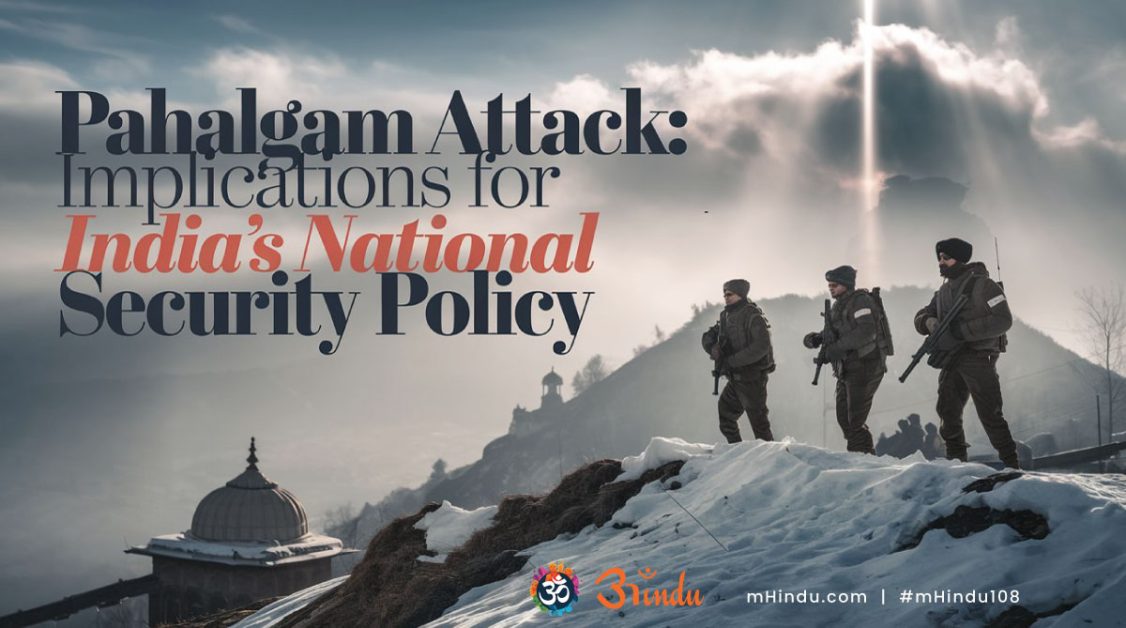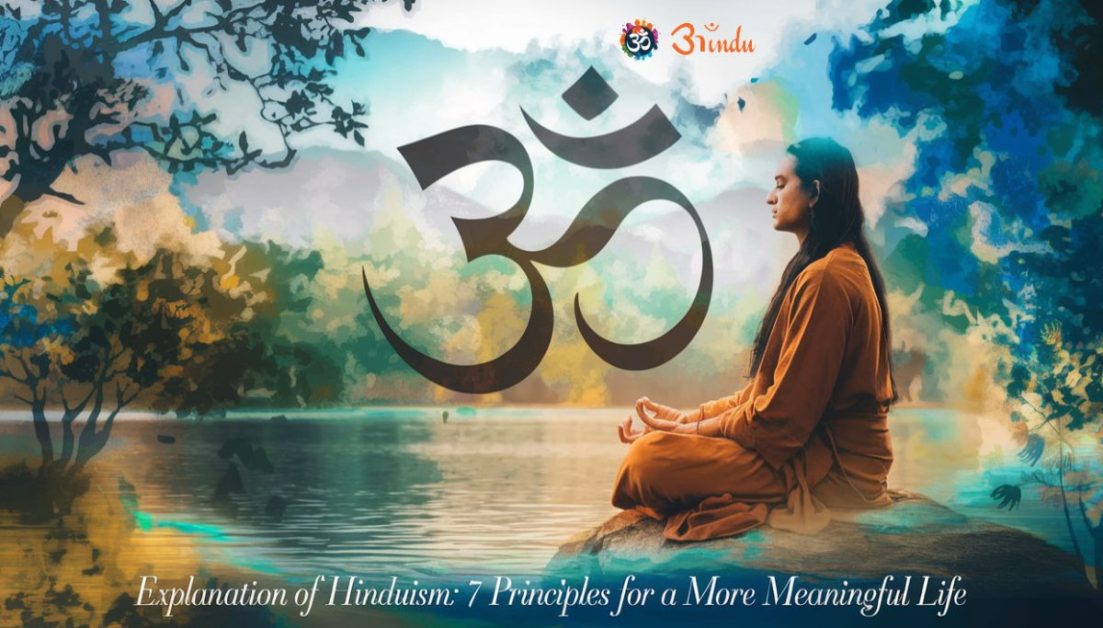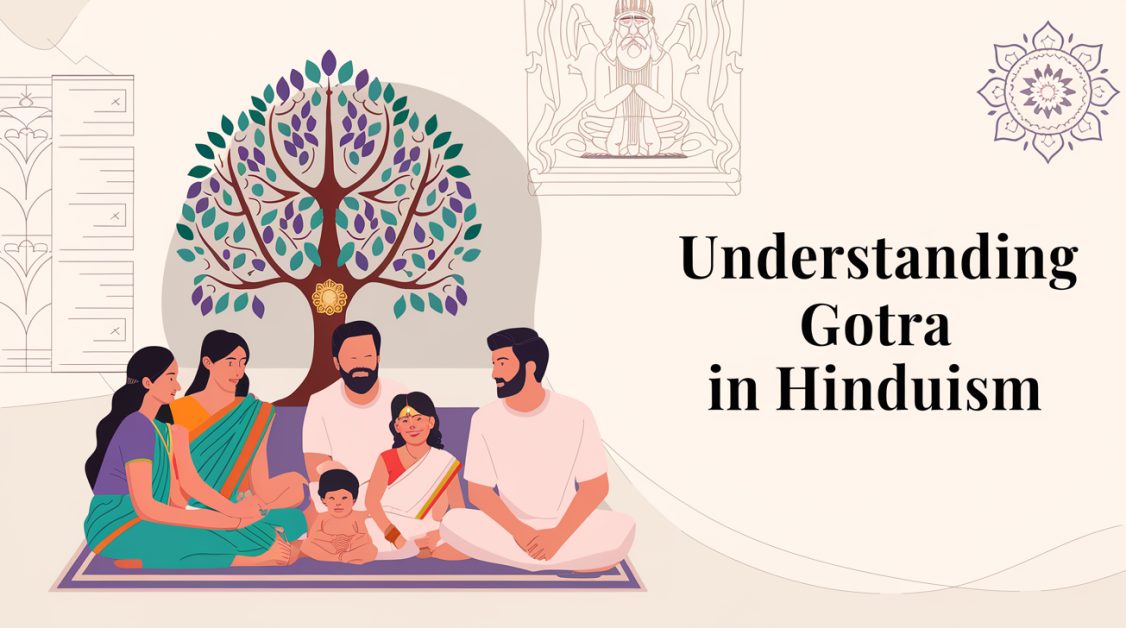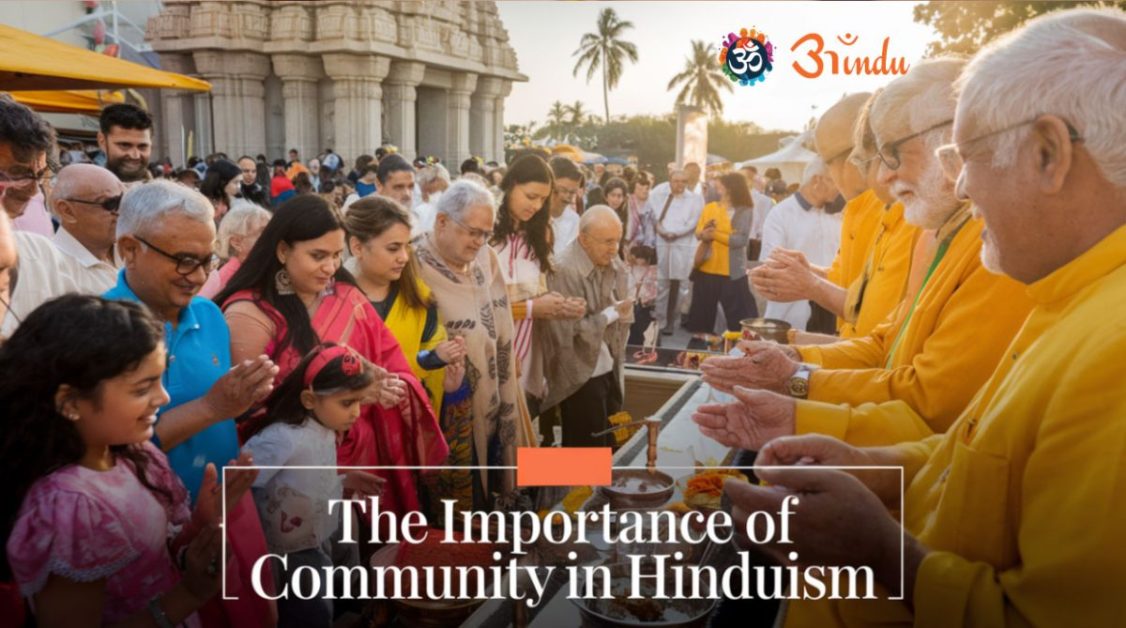
Introduction: A Nation Shaken, A Dharma Awakened
The Pahalgam attack didn’t just strike down innocent lives — it pierced through the very spirit of Bharat. In a single coordinated act of terror, the sanctity of Kashmir’s sacred valleys was violated, and with it, the nation’s conscience was stirred. Yet from the ashes of this tragedy, a call emerged — not only for justice but for a deeper rethinking of India’s national security policy and spiritual strength.
Explore Blog Content
Toggle“Dharmo rakṣati rakṣitaḥ”
(Manusmriti 8.15)
Translation: Dharma protects those who protect dharma.
In Sanatan Dharma, defense is not aggression — it is a sacred responsibility. Protecting citizens is not only a political duty, but a spiritual imperative. The Pahalgam attack marked a moment when that duty was tested — and where India’s soul responded with a blend of strategic clarity, public unity, and divine determination.
What Happened in Pahalgam? Unfolding the Attack That Shook the Nation
The Pahalgam attack occurred in a region long viewed as the spiritual corridor to the sacred Amarnath shrine. For decades, this Himalayan route has drawn millions of Sanatan seekers, especially during the Amarnath Yatra. But that sanctity was brutally violated. In the early morning hours, militants ambushed a convoy, resulting in the martyrdom of multiple CRPF jawans and injuries to others.
The attack was carried out using pre-placed IEDs, followed by automatic weapon fire — a strategy designed to inflict maximum casualties and psychological trauma. What made this attack even more alarming was the symbolism of the location — Pahalgam isn’t just a hill town; it’s part of India’s civilizational spine.
“Yada yada hi dharmasya glanir bhavati bharata…”
(Bhagavad Gita 4.7)
Translation: Whenever there is a decline in dharma, I manifest to restore it.
The militants’ choice of this location was meant to terrorize not just the state but the soul of India. Much like how Pulwama pierced the nation’s heart, Pahalgam struck at our spiritual gut. It wasn’t just an attack on uniformed personnel — it was a declaration of cultural war.
Moreover, early investigations pointed to cross-border infiltration networks, highlighting long-standing issues in border surveillance and cooperative intelligence. Satellite data, intercepted communication, and recovered weapons all pointed to foreign involvement and the use of proxy terror outfits — often aided by sophisticated communication tools and local logistical support.
While political voices debated causes, the nation collectively mourned. Families of martyrs lit pyres with trembling hands, but their faces bore an unwavering dharmic calm — not revenge, but resolve.
Why was the Pahalgam attack considered a national security failure?
The attack revealed gaps in surveillance, possible intelligence lapses, and an alarming pattern: terrorists targeting locations with both religious symbolism and tactical value. The region, known for hosting Amarnath pilgrims, has long symbolized spiritual harmony. Attacking such a space wasn’t just a tactical strike — it was a psychological war against India’s cultural core.
How does this attack differ from previous incidents?
Unlike previous border-based attacks, the Pahalgam incident targeted a high-visibility route within Indian control, drawing parallels to the Pulwama attack. The scale, coordination, and audacity pointed toward external support and cross-border planning, reigniting debates around India’s counter terrorism policy and international response mechanisms.
“Uddhared ātmanātmānaṁ nātmānam avasādayet”
(Bhagavad Gita 6.5)
Translation: Let a person lift himself by his own efforts and not degrade himself.
India’s spiritual philosophy teaches resilience in pain — and in the wake of Pahalgam, the country chose to rise and reform, not mourn and forget.
India’s Tactical Response: Operation Sindoor and Strategic Messaging
In a swift and calibrated response, India launched Operation Sindoor, targeting terror launch pads and infrastructure believed to be responsible for the Pahalgam attack. Conducted via precision drone strikes and localized infiltration by elite commandos, the operation sent a clear message: India will not tolerate attacks on its soil — emotionally or strategically.
What is Operation Sindoor and why is it significant?
Operation Sindoor marked a new doctrine — quick, surgical, and proportionate retaliation without waiting for prolonged diplomatic buildup. Unlike previous full-scale responses, this was agile and symbolic, aligning with India’s evolving counter terrorism policy and echoing past actions like the 2016 surgical strikes.
“Na bhayāt na ca lobhāt na mohaḥ kuryāt durvṛttam”
(Mahabharata – Shanti Parva)
Translation: Do not act immorally out of fear, greed, or delusion.
India’s retaliation wasn’t driven by vengeance, but by a dharmic call to protect, rooted in strategic restraint and moral clarity.
How does Operation Sindoor reflect a change in India’s defense posture?
It highlights India’s shift from passive defense to proactive deterrence — no longer waiting for permission from global powers, but defining its own red lines. It also reinforces the importance of indigenous intelligence, real-time response capability, and multi-channel communication warfare — including diplomatic narratives.
Moreover, it reveals India’s long-term struggle with national security challenges, especially in regions vulnerable to infiltration, radicalization, and political exploitation.
Internal Security: Lessons from Pahalgam for India’s Homeland Defense
In light of the Pahalgam attack, India’s internal security framework has undergone a deep reassessment. But this is not the first time such an introspection was triggered. Similar shifts were seen post-2001 Parliament attacks, the 2008 Mumbai attacks, and the 2016 Uri incident.
What’s different now is public expectation. Indians no longer accept ritual condemnations and policy papers. They demand measurable action, visible deterrence, and a whole-of-society response.
Why are spiritual spaces like Pahalgam increasingly targeted?
Because in the ideological worldview of radical extremists, cultural soft spots are more impactful than just military installations. An attack on a camp near a spiritual site garners more headlines, polarizes communities, and attempts to delegitimize India’s claim as a dharmic civilization rooted in tolerance.
Hence, post-Pahalgam, experts have recommended:
- Installing AI-enabled CCTV grids across key yatra zones
- Embedding intelligence operatives into civilian convoys for covert monitoring
- Creating a spiritual site security force trained in both dharmic etiquette and threat detection
These are not mere logistical changes — they reflect a philosophical shift, where security must not only defend lives but also preserve legacies.
“Sarve bhavantu sukhinah, sarve santu nirāmayāḥ”
(Brihadaranyaka Upanishad)
Translation: May all beings be happy and free from suffering.
India’s strength lies in the harmony between spiritual liberty and sovereign stability. And that’s what must be defended post-Pahalgam — not just people, but peaceful pilgrimage itself.
What internal security gaps did the Pahalgam attack highlight?
The attack uncovered multiple fault lines — including intelligence coordination failures, under-resourced checkpoint vulnerabilities, and inconsistencies in local-police and military integration. Despite the presence of agencies like the NIA, IB, and RAW, inter-agency synergy remains inconsistent, especially in high-risk zones like Kashmir.
Furthermore, the emotional disconnect between central forces and local populations can create fertile ground for radical recruitment — something our spiritual traditions always warn against.
“Sa vidya ya vimuktaye”
(Vishnu Purana)
Translation: True knowledge is that which liberates.
Counter-terrorism isn’t just about weapons — it’s about wisdom. Sanatan Dharma teaches that the mind is the first battlefield. Without grassroots cultural inclusion, any physical defense remains incomplete.
What are the broader national security challenges India faces after such attacks?
Beyond J&K, India faces hybrid threats — cyber-terrorism, urban radicalization, and cross-border narco-terror channels. Each attack, like Pahalgam, is a test of the nation’s layered preparedness — physical, technological, and spiritual.
From the Naxalite corridor to northeastern insurgencies, India must approach security not as a control mechanism, but as a dharmic ecosystem — balancing force with empathy, punishment with rehabilitation, and law with justice.
Diplomatic Frontlines: Global Messaging Post-Pahalgam
One of the less publicized — yet profoundly significant — responses to the Pahalgam attack came not through missiles, but microphones. At the UN Human Rights Council, G20 summits, and Bilateral Security Dialogues, Indian representatives reframed terrorism as not just an Indian problem, but a global spiritual crisis.
India’s External Affairs Ministry emphasized how attacks on sacred spaces like Pahalgam are part of a global trend:
- Churches attacked in Nigeria and France
- Synagogues targeted in the U.S.
- Buddhist sites defiled in Southeast Asia
In each case, spiritual heritage becomes a soft target for terror ideologies. India used this moral lens to build diplomatic consensus, ensuring that Operation Sindoor wasn’t viewed as retaliation — but a global statement of cultural preservation.
India also renewed its push for:
- UN Comprehensive Convention on International Terrorism (CCIT)
- Regional counter-radicalization task forces with SAARC and SCO nations
- Strengthened extradition treaties for individuals involved in cross-border ideological radicalization
How does Pahalgam reshape India’s role in the global spiritual narrative?
India’s unique position as the cradle of Sanatan Dharma gives it the moral authority to speak on faith-targeted violence. Pahalgam gives India a platform to champion cultural security — a concept not yet fully acknowledged by Western democracies.
“Ahimsa paramo dharmaḥ”
(Mahabharata – Anushasana Parva)
Translation: Non-violence is the highest dharma.
India’s non-violent strategic narrative post-Pahalgam — choosing targeted strikes, diplomatic dialog, and cultural education — elevates it beyond a reactive power. It affirms India’s place as the world’s dharmic conscience.
How did the world react to the Pahalgam attack and India’s response?
Global partners like the U.S., France, and Israel issued strong condemnations of the Pahalgam attack, while cautiously endorsing India’s right to defend itself. However, multilateral bodies like the UN remained largely restrained — reflecting the diplomatic tightrope India walks when balancing strategic autonomy with international expectations.
Notably, the Indian government used Operation Sindoor as an example of measured and justified retaliation, gaining moral high ground in the global narrative — especially amidst growing concerns around terrorism in South Asia.
“Vasudhaiva kutumbakam”
(Mahopanishad)
Translation: The world is one family.
India’s diplomatic doctrine reflects this ideal — balancing national pride with international responsibility. And in defending against terror, India now insists that respect for borders and faith go hand in hand.
What changes does Pahalgam bring to India’s international defense dialogue?
Pahalgam has already led to:
- Renewed defense pacts with trusted partners (like Israel’s tech-sharing and U.S. intel coordination).
- Stronger cases for blacklisting terror outfits in FATF and UNSC.
- Push for cyber-defense diplomacy with nations facing similar threats.
The attack also elevated the need to connect Indian cultural values — like protecting pilgrims and temples — with international conversations on faith-based targeting.
Cultural Warfront: Protecting Pilgrimage, Identity & Dharma
Perhaps the most overlooked aspect of the Pahalgam attack was its spiritual dimension. Attacking a region sacred to Amarnath Yatra pilgrims wasn’t just militaristic — it was symbolic. Terrorism here becomes a form of cultural invasion, targeting the Sanatan soul of India.
Why is protecting spiritual spaces a national security priority?
Temples, pilgrimages, and dharmic sites are more than religious centers — they are repositories of India’s civilizational memory. An attack on such a space isn’t just destruction — it is an erasure attempt.
The Pahalgam attack reminded Indians that national security isn’t only about borders — it’s about preserving shraddha (faith), samskara (values), and smriti (heritage).
“Satyam vada, dharmam chara”
(Taittiriya Upanishad)
Translation: Speak the truth. Walk the path of righteousness.
Protecting yatras, temples, and sadhus is not just a political act — it is an act of national dharma. India’s strategy going forward must include spiritual geography protection, such as:
- Special intelligence zones around pilgrimage routes
- Culturally-trained paramilitary personnel
- Community-led yatra protection initiatives
Can Sanatan Dharma offer a framework for national unity in such times?
Yes. In the aftermath of terror, Sanatan Dharma offers emotional resilience. It teaches unity over revenge, clarity over chaos, and collective healing over hate.
In villages and cities after the Pahalgam attack, we saw temples organize prayers, schools teach peace, and common citizens light diyas not just in mourning — but in spiritual resistance. And that is India’s greatest security strength — its collective dharmic consciousness.
Summary: When a Nation Is Wounded, Dharma Must Lead the Recovery
The Pahalgam attack was more than a tragic act of terrorism — it was a national wake-up call. It forced India to confront the evolving face of threats: not just bullets and bombs, but ideological infiltration, cultural desecration, and spiritual destabilization. From Operation Sindoor to grassroots unity, India’s response has shown strength — but it has also shown the need for transformation.
Key takeaways from the incident include:
- The urgent need for a reimagined India counter terrorism policy based on proactive deterrence and spiritual resilience.
- The role of the Indian spiritual community in defending not just borders but cultural and sacred spaces.
- The necessity of inter-agency synergy in handling national security challenges across regions and platforms.
- The power of dharma and cultural unity as tools of emotional healing and civilizational preservation.
“Yatra yogeshvarah krishno yatra partho dhanur-dharah, tatra shri vijayo bhutir dhruva nitir matir mama.”
(Bhagavad Gita 18.78)
Translation: Where Krishna and Arjuna stand together, there is victory, righteousness, and moral clarity.
Let India stand in that space — with vision in one hand and a sense of dharma in the other. Let the memory of Pahalgam not be one of grief alone, but of rebirth through righteousness, of resilience through spiritual unity.
FAQs: Pahalgam Attack and India’s Security Policy
1. What happened in the Pahalgam attack?
The Pahalgam attack involved a coordinated ambush by terrorists on a convoy in Jammu & Kashmir. It resulted in multiple fatalities and exposed key vulnerabilities in India’s security and intelligence framework.
2. Why is the Pahalgam attack significant in India’s national security discourse?
This attack was a direct strike on a spiritually significant area. It sparked critical evaluation of India’s counter-terrorism strategy and highlighted the emotional and cultural dimensions of terrorism.
3. What is Operation Sindoor and how did it respond to the Pahalgam attack?
Operation Sindoor was India’s rapid tactical response involving drone strikes and commando operations against suspected terror infrastructure, signaling a bold shift in India’s counter-offensive posture.
4. How has the Pahalgam incident influenced India’s counter terrorism policy?
It accelerated reforms in coordination between agencies, surveillance deployment, and introduced new doctrines of quick retaliation, symbolizing India’s resolve to confront terrorism decisively.
5. What are the national security challenges India faces today?
India’s threats include cross-border terrorism, cyber warfare, internal radicalization, and socio-cultural destabilization. Incidents like Pahalgam highlight the multifaceted nature of these threats.
6. How did the public and spiritual community respond to the Pahalgam attack?
Across India, temples and civil society organized peace prayers, candlelight marches, and cultural unity drives — proving that spiritual strength is as important as military power in national recovery.
7. What role does Sanatan Dharma play in India’s approach to national resilience?
Sanatan Dharma provides a framework of spiritual clarity, emotional strength, and dharmic unity, enabling collective healing and ethical defense responses after national crises like the Pahalgam attack.
8. Why must pilgrimage sites be integrated into national security planning?
Sites like Pahalgam are not only religious but cultural anchors. Their protection symbolizes the preservation of India’s identity, making them strategic as well as sacred.







